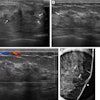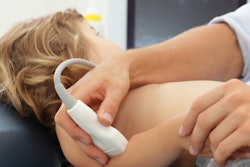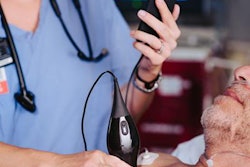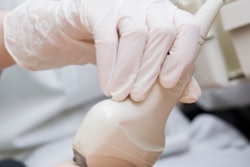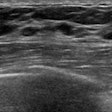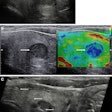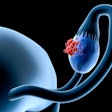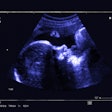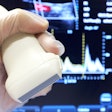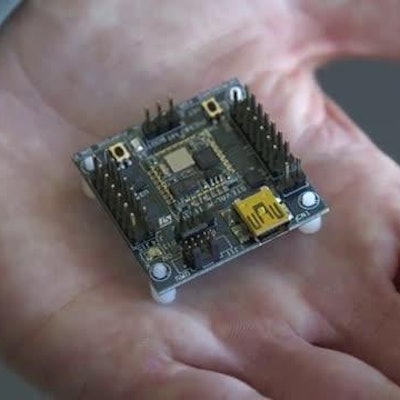
Researchers from Stanford University and Duke University have developed technology that transforms 2D ultrasound into 3D -- for the cost of a $10 microchip. They will demonstrate their work at this week's American College of Emergency Physicians (ACEP) Research Forum in Washington, DC.
When used with ultrasound, the technology developed to keep track of a smartphone's orientation helps physicians more easily image babies or trauma patients who can't be moved, according to a statement released by Duke University.
 Dr. Joshua Broder from Duke University.
Dr. Joshua Broder from Duke University.The chip works much like a Nintendo Wii video game controller, said Dr. Joshua Broder, one of the technology's creators and an emergency physician at Duke. It registers the ultrasound probe's orientation and then uses software to stitch hundreds of individual slices of the anatomy together into a 3D image. The result? A 3D model similar to a CT or MR scan, according to Broder.
"With 2D technology, you see a visual slice of an organ, but without any context, you can make mistakes," he said in the Duke statement. "These are problems that can be solved with the added orientation and holistic context of 3D technology. Gaining that ability at an incredibly low cost by taking existing machines and upgrading them seemed like the best solution to us."
Going gamer
The idea came to Broder in 2014, when he and his son were using a Nintendo Wii system. He wondered whether the game console's ability to track the position of the controller could be used with an ultrasound probe. So he approached Duke's Pratt School of Engineering and began working with then-undergraduate Matt Morgan, as well as biomedical engineering professors Carl Herickhoff, PhD, and Jeremy Dahl, PhD. (Herickhoff and Pratt have since taken positions at Stanford's Ultrasound Research Group and continue to develop the technology.)
Broder and colleagues used Duke's 3D printing labs to create a prototype, which consisted of a streamlined plastic holster that slips onto the ultrasound probe. Technicians can use the probe as usual or add 3D images by snapping on a plastic attachment that houses the location-sensing microchip. The team also created a plastic stand that can be used to steady the probe.
The microchip and the ultrasound probe connect via computer cables to a laptop, according to Broder and colleagues; a computer program then uses the imaging data to create a 3D model.
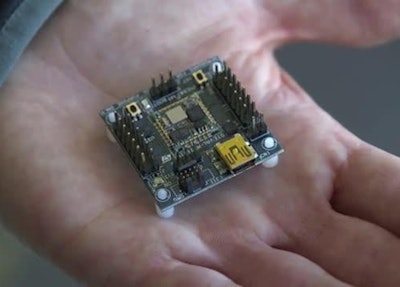 Technology that keeps track of smartphone orientation can now give $50,000 ultrasound machines many of the 3D imaging abilities of their $250,000 counterparts -- for the cost of a $10 microchip. Image courtesy of Duke University.
Technology that keeps track of smartphone orientation can now give $50,000 ultrasound machines many of the 3D imaging abilities of their $250,000 counterparts -- for the cost of a $10 microchip. Image courtesy of Duke University.Both Duke and Stanford are now testing the technology to determine how it fits into the flow of patient care, the researchers said. They plan to demonstrate the device on October 31 at the ACEP Research Forum and will describe how they collected 3D brain images of a 7-month-old with hydrocephalus while the baby napped.
Happy alternative?
The technology offers an exciting alternative for imaging newborns and trauma patients, according to the researchers. Doctors may need numerous scans when babies are born with fluid on the brain or a congenital condition, but newborns can be difficult to image. MRI exams require patients to be still, which often means sedation for an infant, and although CT scans provide excellent 3D images, they expose the infant to radiation. And trauma patients often can't be moved, which makes identifying sources of bleeding and measuring the rate of bleeding challenging, Broder said.
"Ultrasound is inexpensive, portable, and completely safe in every patient," he said. "And since it's brought to the bedside, it doesn't interfere with patient care."
Broder, Herickhoff, Dahl, and Morgan have obtained an international patent for the technology, and they believe the current clinical trials could allow them to bring it to market in a couple of years.
"In emergency medicine, we use ultrasound to look at every part of the body -- tracking catheters and checking for bleeding in trauma patients," Broder said. "Now we can augment 2D machines and improve these applications. Instead of looking through a keyhole to understand what's in the room, we can open a door and see everything in front of us."


